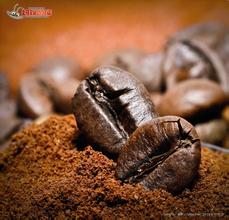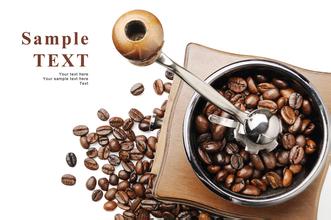Flavor description and treatment of Katim Coffee beans in Yunnan introduction of Grinding scale in producing areas
Flavor description and treatment of Katim Coffee beans in Yunnan introduction of Grinding scale in producing areas
According to the application of Yunnan Dehong Tropical Agricultural Science Research Institute, from January 16 to 17, 2014, the National Tropical crop Variety approval Committee organized relevant experts to conduct on-site evaluation and preliminary examination of Katim CIFC (F6), a small seed coffee variety declared by Dehong Rezuo, in Mangshi and Ruili, Dehong Prefecture, Yunnan Province. The on-site evaluation and preliminary examination of the varieties were presided over by Liu Jianling, Associate researcher of the Hot work Development Department of the South Asia Hot farming Center of the Ministry of Agriculture, and led by researcher Liu Guodao, Vice President of the Chinese Academy of Tropical Agricultural Sciences. Members are: long long Universe researcher of the Development Department of the Chinese Academy of Tropical Agricultural Sciences, Professor Song Guomin, president of Yunnan Tropical crops Vocational College, Li Xiufeng, vice president of Yunnan Agricultural Engineering Research and Design Institute, and Dong Yunping, associate researcher of spice and beverage research institute of Chinese Academy of Tropical Agricultural Sciences.
The small seed coffee variety Katim CIFC7963 (F6), introduced from the Portuguese International Coffee Rust Research Center (CIFC) in 1988, was preserved and planted in Dehong Institute of Tropical Agricultural Sciences in Yunnan Province. Variety comparison, regional and productive tests were carried out in Ruili, Baoshan, Jinghong and Pu'er in Yunnan from 1989 to 2004. the results showed that this variety had high and stable yield, and the average fresh fruit yield per plant was 3.39kg for 4 consecutive years. 1128.87kg per mu yield, high rice yield, rust resistance, wide adaptability, its compact plant type can reduce the harm of longicorn beetles. Approved by Yunnan Forest Variety approval Committee in December 2006, the current promotion area is more than 1 million mu, more than 80% of the national coffee planting area.
All the varieties planted in Pu'er area of Yunnan are catimor (Katim). In Baoshan City, typica and bourbon were introduced as early as the 1950s, and the locals called them "old varieties". Because the old varieties have low disease and insect resistance and yield, and the management is relatively expensive and manpower, coupled with the market purchase price does not have many advantages, brown farmers have changed to a new variety catimor in recent years. From the botanical point of view of coffee, Yunnan small-grain coffee is genetically similar to the recognized best blue mountains in Jamaica (Jamaica Blue Mountain) and Kona in Hawaii.
Catimor, also known as Katim, was bred by the Portuguese in 1959. It has 3/4 Arabica lineage and 1/4 Robusta pedigree. Its most important feature is its extremely strong and strong resistance to leaf rust. This is an ideal commercial variety for coffee producers in terms of yield, maturity, pest resistance and flavor. However, once planted at high altitudes, its inherent "inferiority" is undoubtedly exposed, while the advantages of older, more native Arabica coffee, such as Tibica and Bourbon, are fully demonstrated. At present, each series of Katim has a very large planting area in Yunnan, and coffee farmers are optimistic about its three advantages of short trees, high yield and disease resistance (resistance to longicorn beetles and leaf rust). At present, Katim in Yunnan has not yet won a prize in any authoritative competition, which is not a fine product, and there is a long way to go to improve and explore.

Important Notice :
前街咖啡 FrontStreet Coffee has moved to new addredd:
FrontStreet Coffee Address: 315,Donghua East Road,GuangZhou
Tel:020 38364473
- Prev

Introduction to the production area of grinding scale by the method of describing the flavor of Pacamara coffee beans treated with El Salvador honey
El Salvador honey treats Pacamara coffee bean flavor description grinding scale production area introduction El Salvador coffee is a specialty of Central America, where coffee body is light, aromatic, pure and slightly sour. Like Guatemala and Costa Rica, coffee in El Salvador is graded according to altitude, and the higher the altitude, the better the coffee. The best brand is Pipil.
- Next

Introduction to the taste of grinding scale varieties of Brazilian yellow bourbon coffee beans
Brazilian yellow bourbon coffee bean flavor description treatment method grinding scale variety taste introduction product name: Brazil yellow bourbon Brazil Chacal Estate Yellow Bourbon specification: 227g raw bean producing country: Brazil: Minas Minas Llicinea manor: waterfall manor species: yellow bourbon grade: 2 d/300gr, 17-18 mesh height: 1200m ~ 1380m
Related
- Detailed explanation of Jadeite planting Land in Panamanian Jadeite Manor introduction to the grading system of Jadeite competitive bidding, Red bid, Green bid and Rose Summer
- Story of Coffee planting in Brenka region of Costa Rica Stonehenge Manor anaerobic heavy honey treatment of flavor mouth
- What's on the barrel of Blue Mountain Coffee beans?
- Can American coffee also pull flowers? How to use hot American style to pull out a good-looking pattern?
- Can you make a cold extract with coffee beans? What is the right proportion for cold-extracted coffee formula?
- Indonesian PWN Gold Mandrine Coffee Origin Features Flavor How to Chong? Mandolin coffee is American.
- A brief introduction to the flavor characteristics of Brazilian yellow bourbon coffee beans
- What is the effect of different water quality on the flavor of cold-extracted coffee? What kind of water is best for brewing coffee?
- Why do you think of Rose Summer whenever you mention Panamanian coffee?
- Introduction to the characteristics of authentic blue mountain coffee bean producing areas? What is the CIB Coffee Authority in Jamaica?

